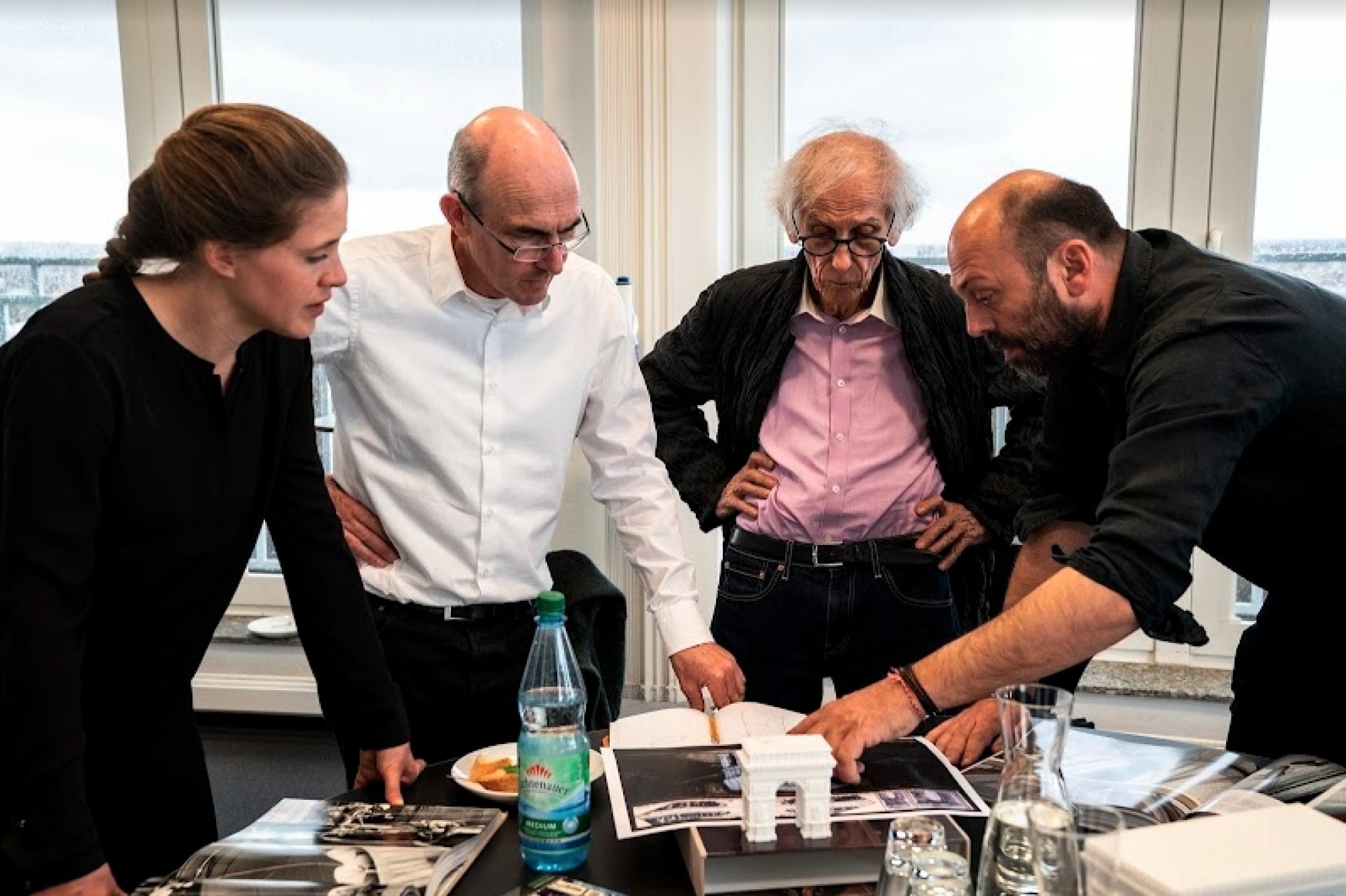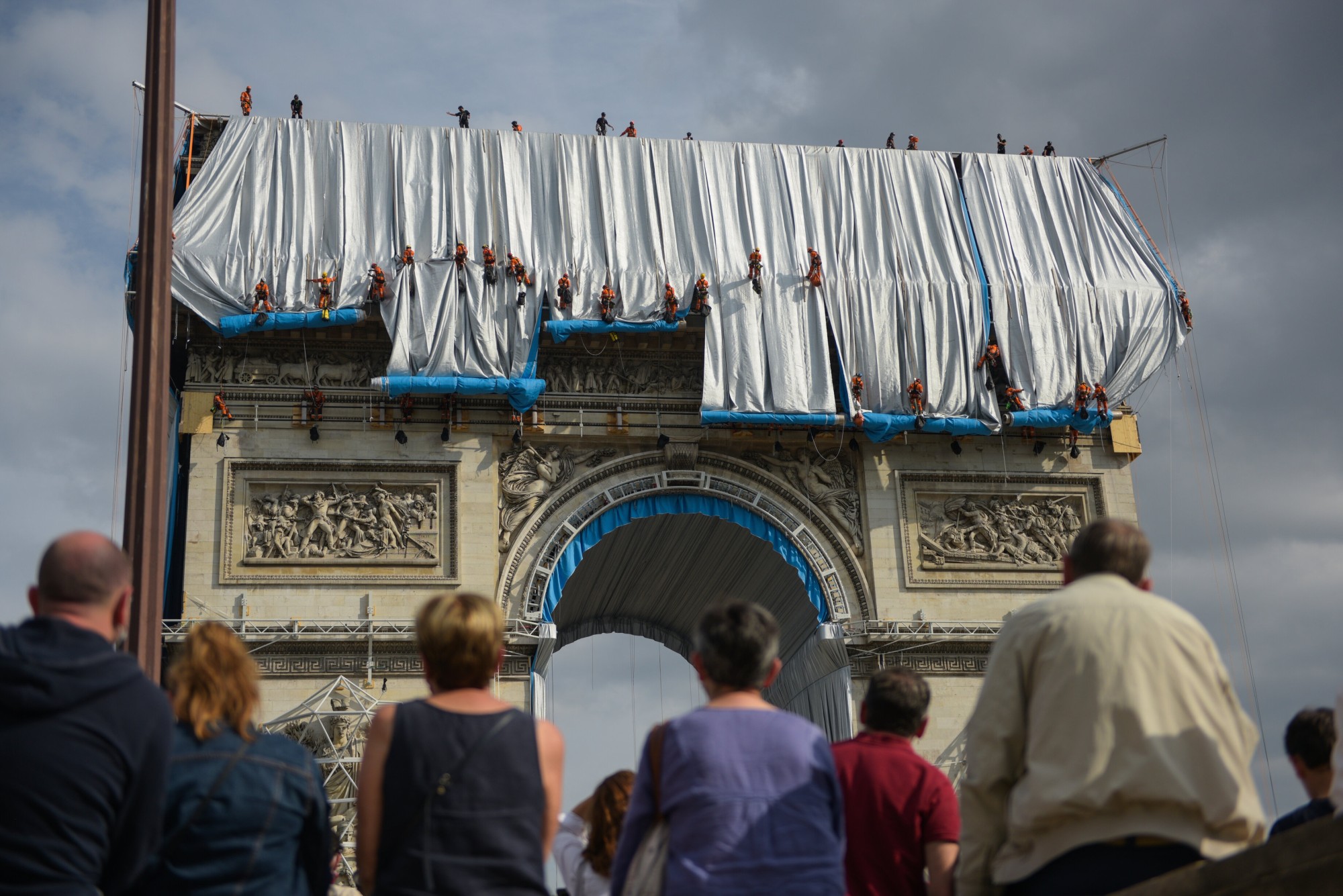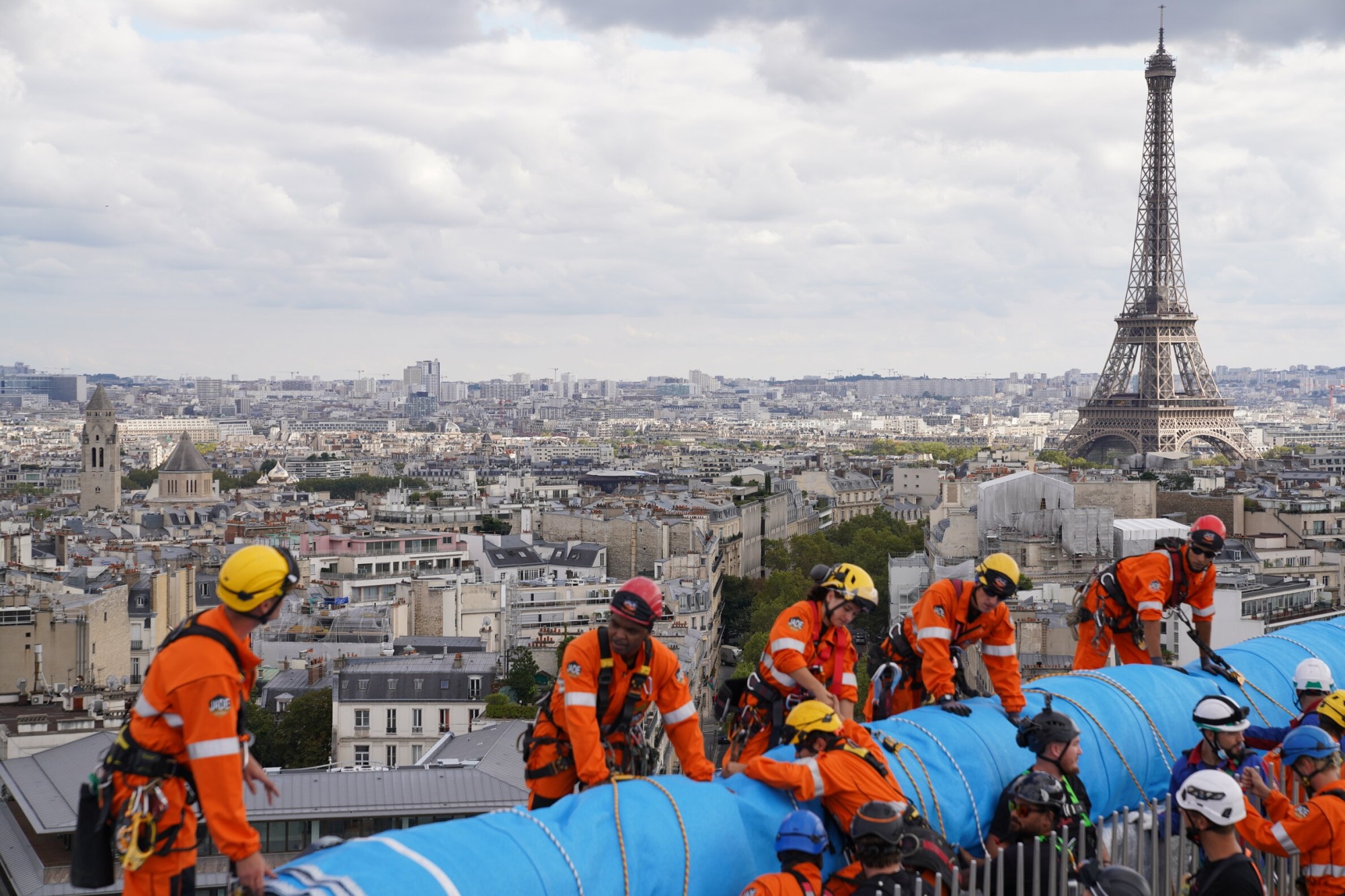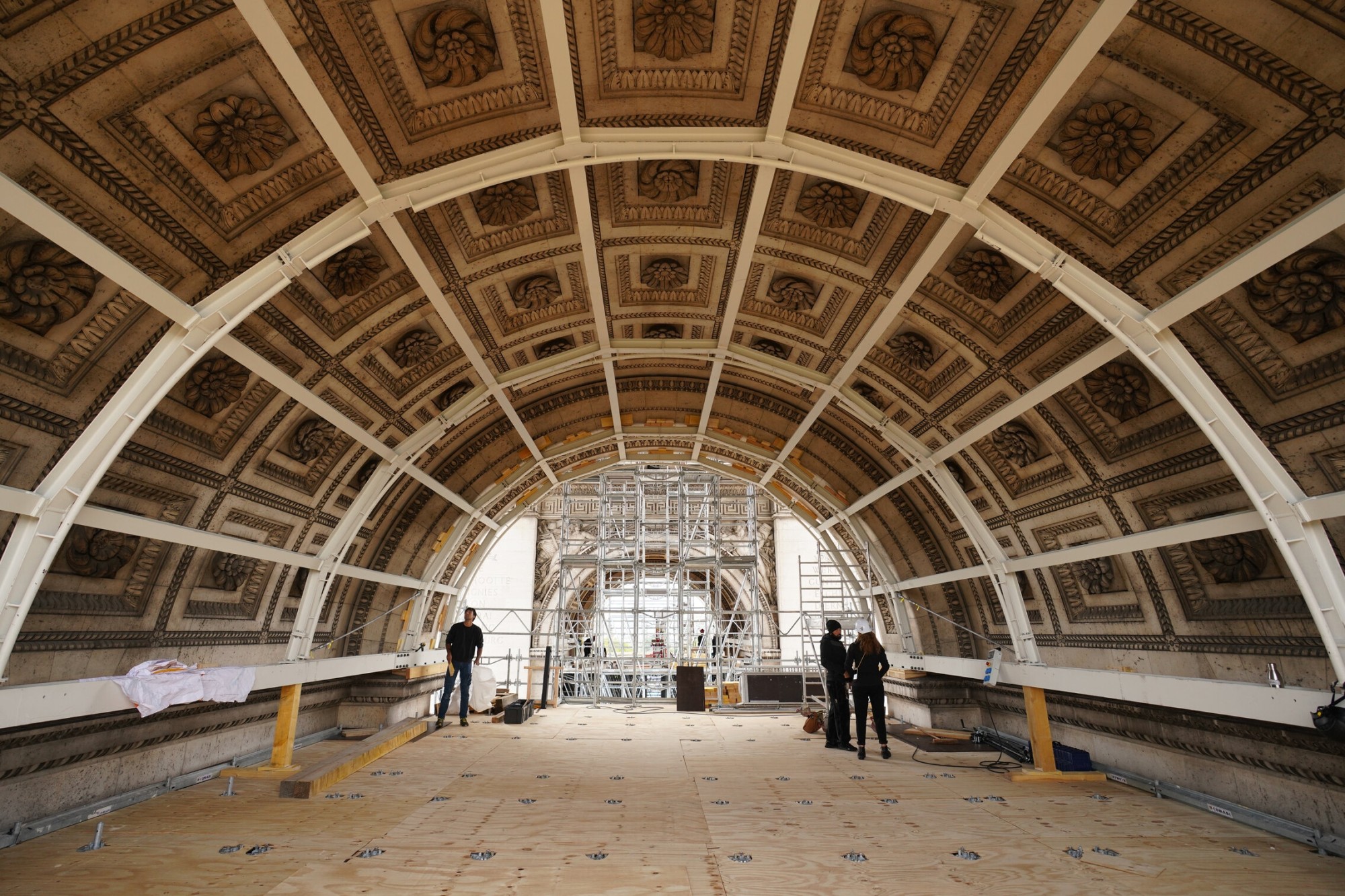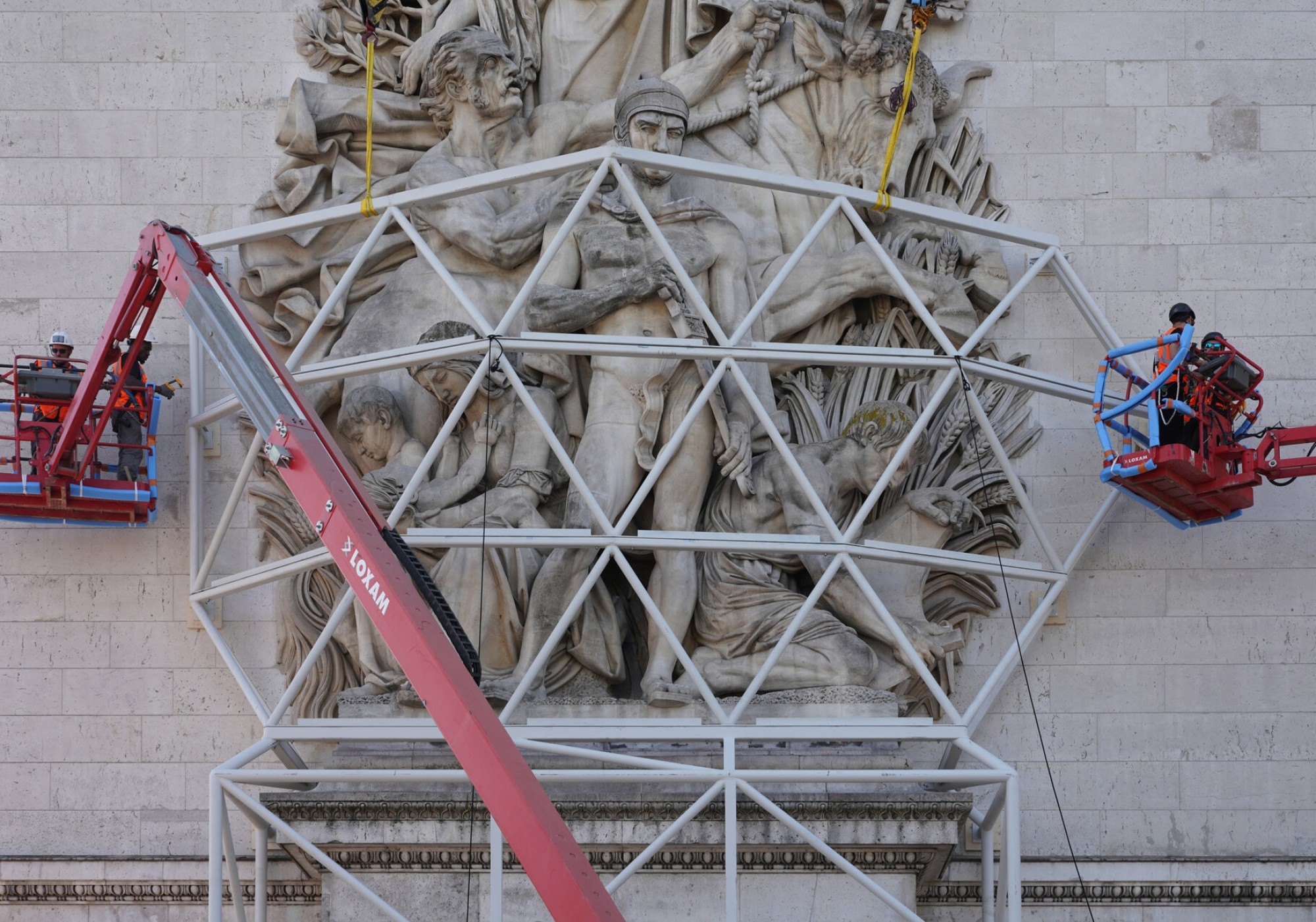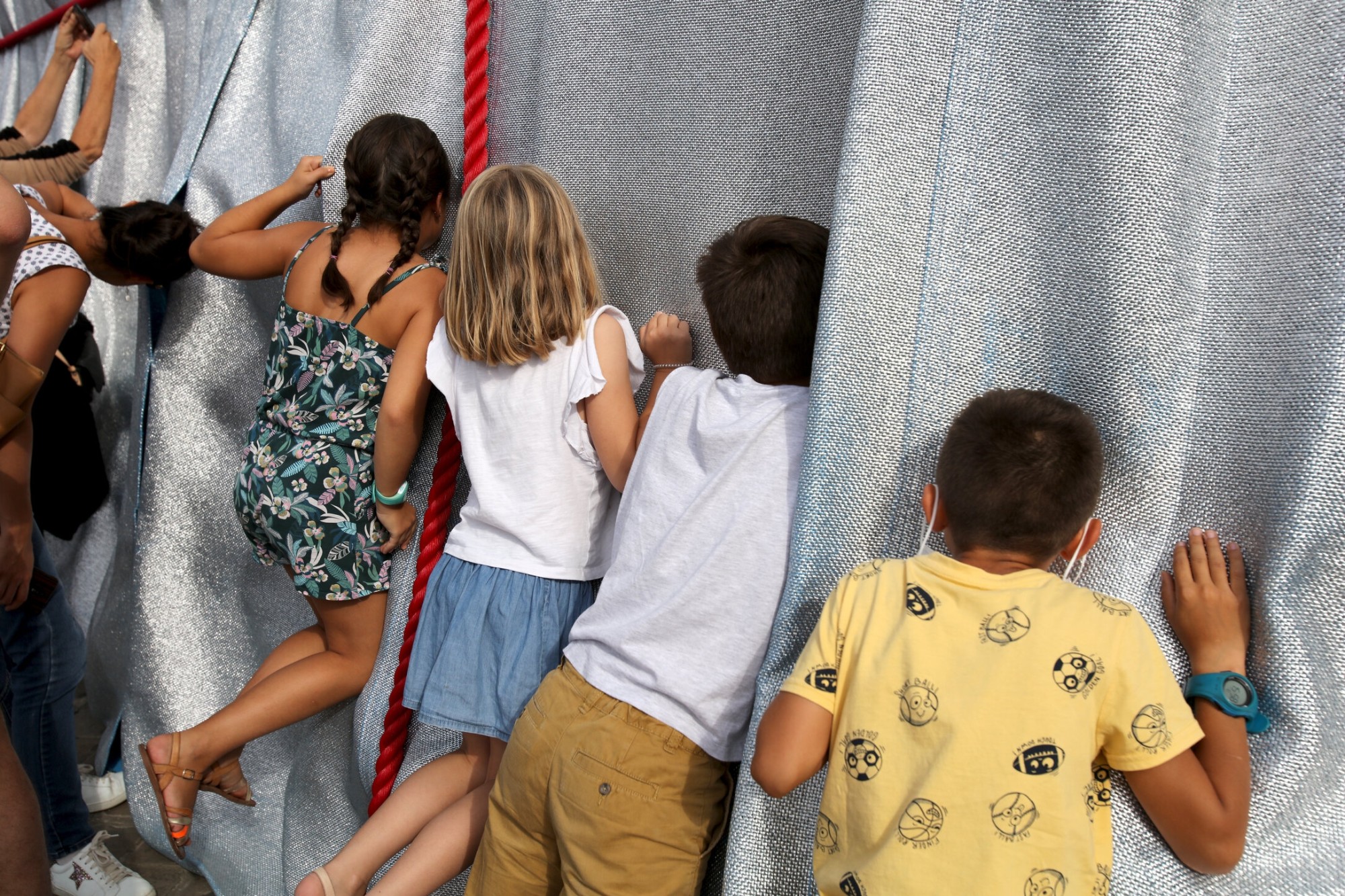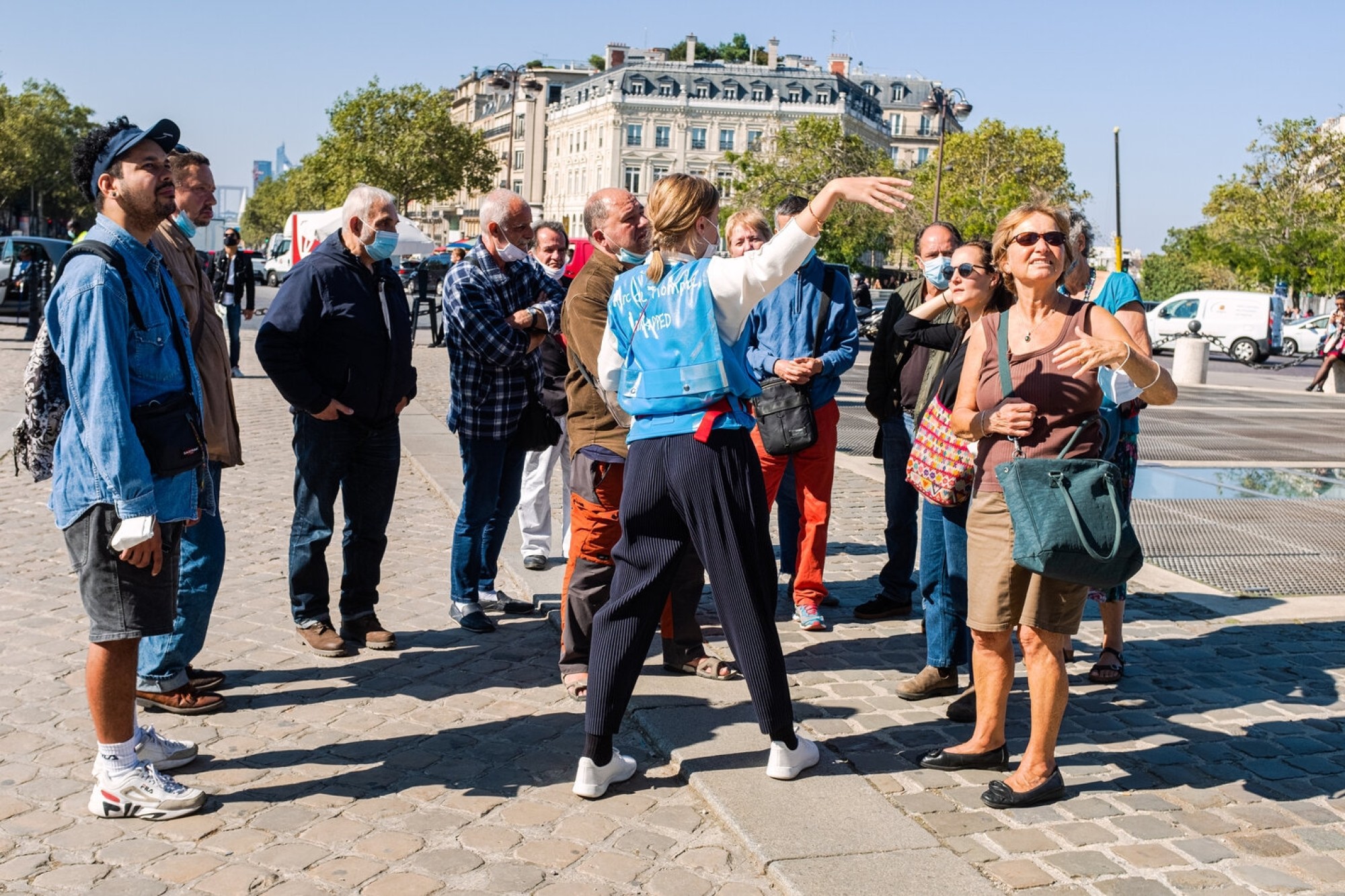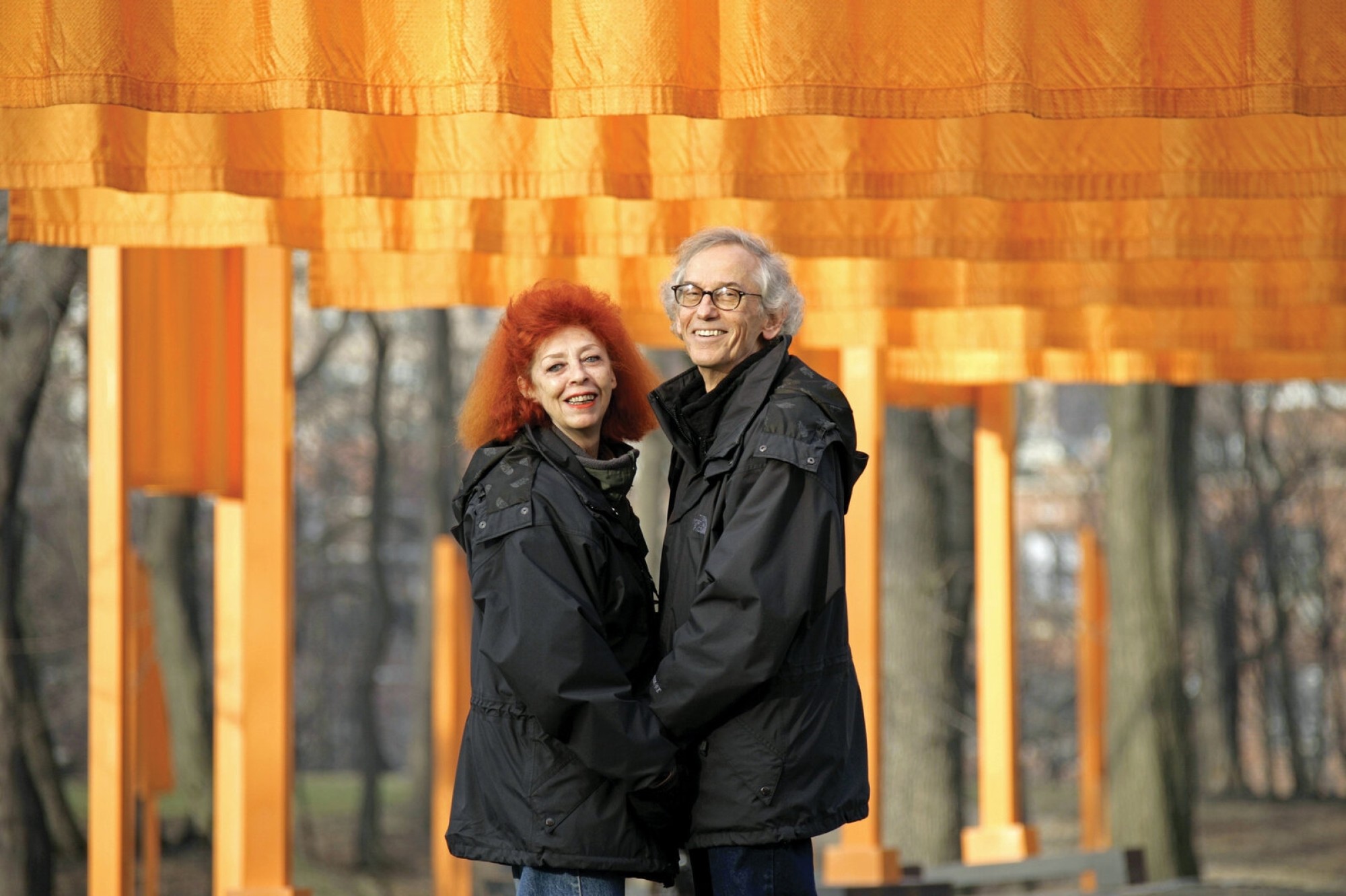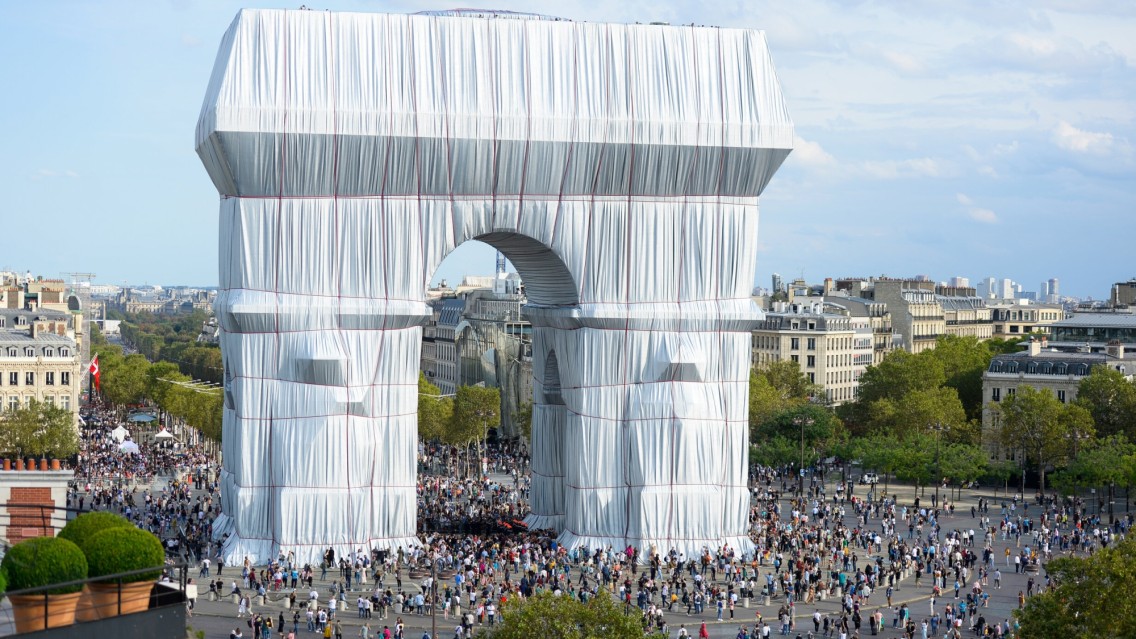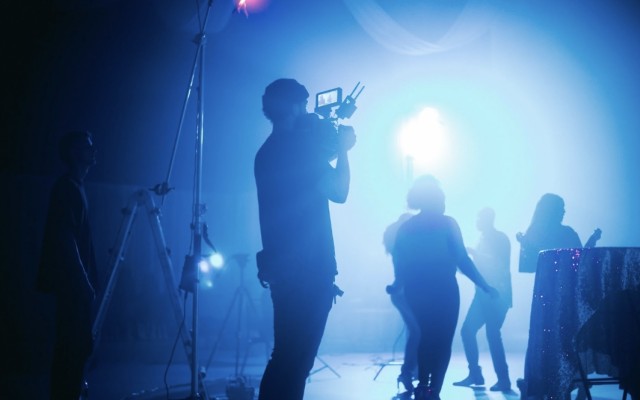 Complete a Larger Than Life Art Installation?
Complete a Larger Than Life Art Installation?

Engineer, L3H Examiner, Aviation expert, pilot, and founder of geo - Die Luftwerker
Unknowing Parisians and tourists passing through Place Charles de Gaulle must have been bewildered by the appearance of the Arc de Triomphe, wrapped in a shimmering silver fabric.
At first glance, it might have seemed like an elegantly wrapped scaffolding, but it's actually an art installation designed by the late married couple Christo and Jeanne-Claude.
L’Arc de Triomphe, Wrapped was on display for two weeks in late September of 2021. The project involved wrapping the arch in 25,000m2 of fabric, held down by 3,000 meters of red rope. Public opinion of the mummified monument lingers somewhere between extraordinary and hideous. But above all; extremely surreal.
You can imagine executing a project of this magnitude must be costly, and far from child’s play. So, how do you wrap a more than 200 years old monument? We had a little chat with Robert Meyknecht, the CEO of geo - Die Luftwerker, the company that provided the fabric for the project.

